Foraging for and cooking insects
Foraging for and cooking insects
-
-
-
-
-
Foraging for and cooking insects
-
Post #1 - August 17th, 2012, 7:41 amI spend my summers cooking for a 101 year old seasonal art school located on 115 acres of pristine wilderness on a peninsula just north of Saugatuck, MI. While the curriculum is decidedly arts programming heavy, we occasionally offer a course in the sciences. This year, to my delight, we offered an "insectology" course (I was a big dork for everything creepy crawly as a kid, especially weird bugs). The instructor approached me at the onset of their two week class to get a sense if I would be interested in collaborating in an exercise in entomophagy- the consumption of insects. Well, of course I was!
Grasshoppers seemed to be an obvious choice for our collaboration- abundant, proven to be edible, and relatively easy to collect. Also, I’ve had experience eating these bugs– about seven years ago in a dimly lit cantina in Oaxaca I was scarfing down little piles of various salty snack foods as part of a botana plate. I eagerly devoured a mysterious little tangle of some shredded salty stuff which I only realized was insects after inquiring of my server– chapulines it was! The shredded variety, eaten in low lighting proved to be the perfect gateway. At the market they offer several sizes of chapulines starting with the shreds and working up in size. By the end of the week I was giddily scarfing down the biggest hoppers I could get my hands on. And I always hoped that one day I might prepare them myself. But where to get so many grasshoppers? Employ a team of amateur entomologists working on said 115 acres of wilderness, obviously. It took them a little over a week to collect about 60 specimen, about 3 cups. I'm sure they were focused firstly on their studies, though this yield was not exactly an abundant return.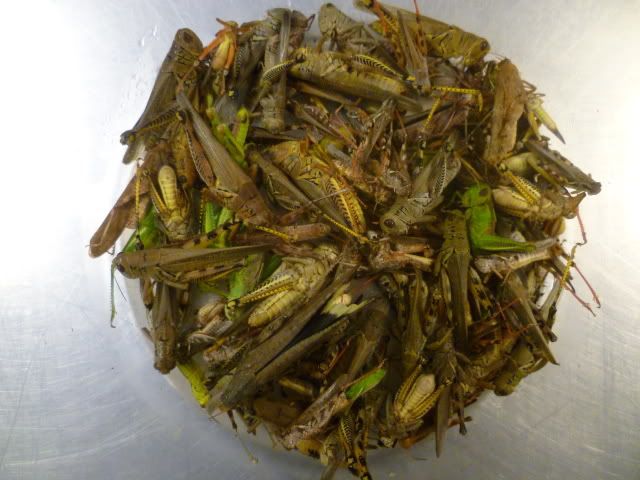
I did a little research and read certain info regarding cleaning the grasshoppers, and most sources mentioned removing the wings and legs. I clearly remember eating chapulines with legs intact, so that step seemed unnecessary. After inspecting the product though, the wing coverings and wings seemed tough and fibrous, so I put the class to task of picking off the wings.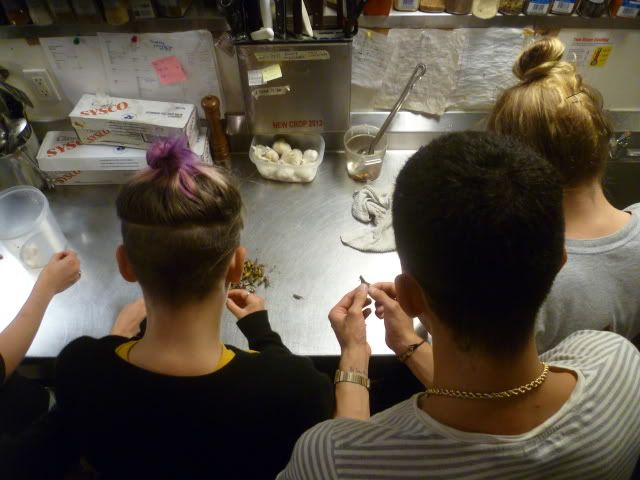
I infused a few cups of olive oil with garlic which I used to deep fry the hoppers. It was rather remarkable how quickly they turned to the toasty brown color I remembered from Oaxaca, almost as soon as the hit the hot oil. It seemed as though they should cook through a bit, so I gave them a few minutes.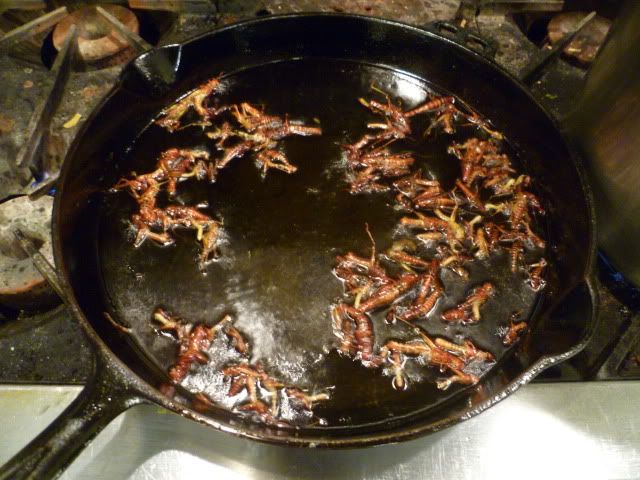
I removed them from the oil with a slotted spoon and blotted off excess oil. Seasoning was as simple as a dusting of my buddy Dave’s habanero salt and a squeeze of lime.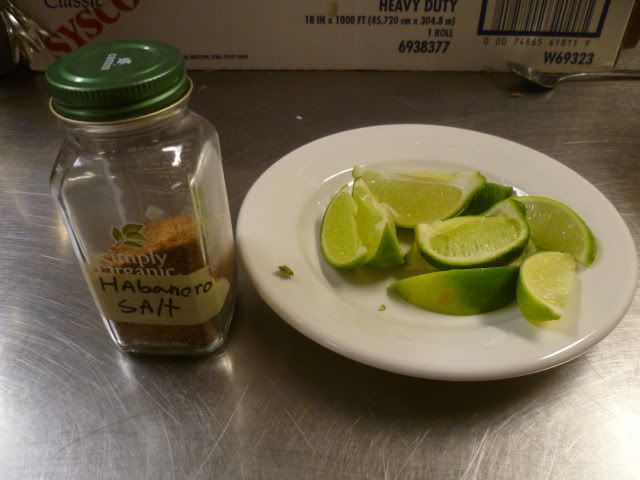
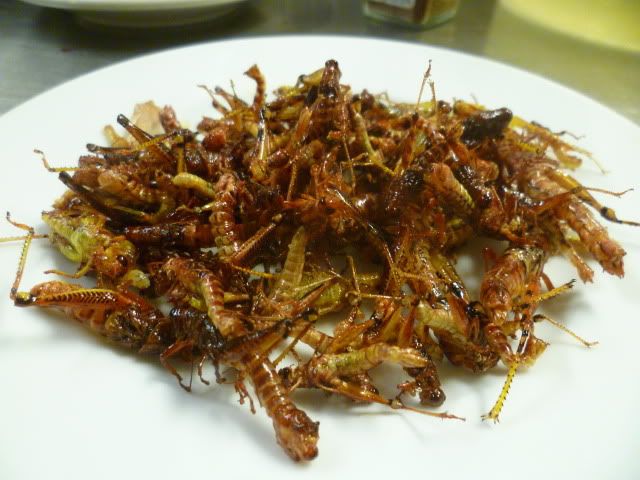
The results were delicious! They fried up very crisp and had a toasty richness and savory note reminiscent of eating shell on crustaceans (which makes perfect sense, right? arthropods they’re all). You may notice the variety of sizes. The larger specimens had more flavor diversity with a slightly bitter aftertaste and some had just a hint of grit, not unlike a shrimp with mud vain intact. These bigger guys proved more challenging for some of the kids in the class that were new to eating bugs. That said, I was impressed by the almost 100% willingness of the students to eat the hoppers. On one hand, in this context, there was an eagerness amongst the group to eat the bugs as their duty as participants in the class, but I also can’t help but wonder if culturally we are ready to overcome our prejudices over creepy crawly things. Eating grasshoppers seems like an obvious and delicious ingredient and protein source. The hardest moment is looking the critters in their little beady eyes, but if they are prepared well, the moment their savory crunch hits our pleasure receptors, we can realize that hey, this is more than just a novelty, this is actually food that is enjoyable to eat. Now only if I had a crew of 12 art students armed with bug nets scouring the woods for me day in, day out.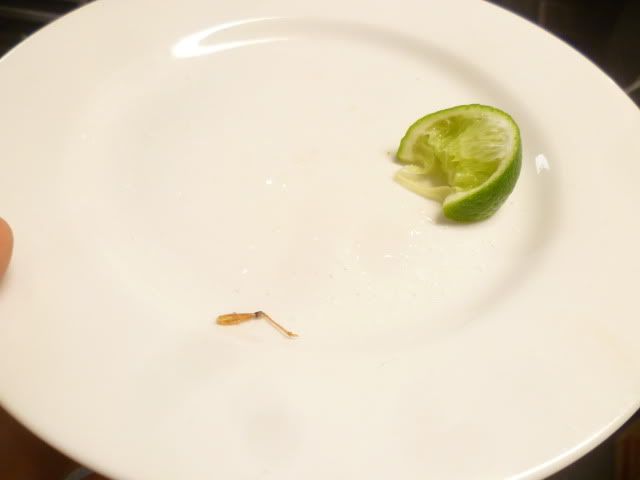
Anybody else out there cooking bugs?
-
-
Post #2 - October 6th, 2012, 11:40 amWell I can not say it looks appetizing and I would not eat them myself. I detest grasshoppers or any bug for that matter except bees but I would not eat them other than the honey.
In response to your other question you know darn well if you are reading this forum that Cathy 2 and David Hammond have eaten bugs and maybe others. You you are among (buggy eating) friends here.Toria
"I like this place and willingly could waste my time in it" - As You Like It,
W. Shakespeare

